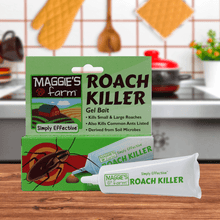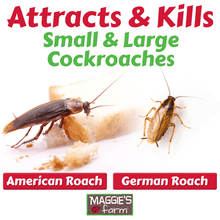DIRECTIONS FOR USE
Always read label directions and precautions prior to use. It is a violation of federal law to use this product in a manner inconsistent with its labeling.
Use Sites: In and around structures, including, but not limited to, homes, apartments, and other man-made structures, garages and transport vehicles.
Indoor Use: Results will be best if spilled food and other debris are cleaned up before applying bait. Apply bait so it is out of reach of children and pets. Apply bait only in cracks, crevices, voids, other inaccessible areas, and non-exposed surfaces such as the undersides of furniture and fixtures and under or behind appliances. If bait contacts exposed surfaces, remove bait and wash exposed surfaces. Do not contaminate food or feed. Do not apply bait to areas that are washed down frequently, such as in cracks around the edges of food prep surfaces. Do not apply bait in areas where there is a risk of electrical shock. Do not apply bait on hot surfaces or other areas where the temperature may exceed 130° F as the bait could melt and drip.
Roaches: Apply bait in small spots about ¼” (pea-sized) in diameter (about 0.5g). For most roach infestations, apply 10 to 20 spots per 100 square feet. Use the higher number of spots when infestations are heavy and/or when roaches are living primarily in walls voids or other inaccessible areas. Smaller, more frequent spots are better than occasional large spots. Bait may also be applied in tamper-resistant bait stations. Apply about 1 gram (3/8” size spot) in each station. Place 1-3 stations per 100 square feet, out of the way, in places where roaches may hide. Look for areas where roaches may hide or enter buildings. Some of these areas include areas where baseboards are peeling away from walls, cracks in and around equipment and appliances such as stoves, sinks, dishwashers, refrigerators, ice machines, and walk-in coolers, tubs, toilets, drain openings, hollow table legs, areas where pipes come through walls, cracks between different construction elements, around electrical boxes, cracks around hinges, where cabinets meet walls and cracks leading into wall, ceiling or floor voids. Pay particular attention to cracks which lead into void areas, even small ones. Inspect bait every 2-4 weeks and reapply when bait is almost entirely consumed.
Silverfish: Apply in 0.5g (pea-sized) spots for roaches. Apply 5-10 spots per 100 square feet. Bait areas where silverfish are seen, such as a bathroom, around bookcases, stacks of papers, or peeling wallpaper and to cracks between the living space and the attic, such as around light fixtures. Inspect bait after 2-4 weeks and reapply if bait is almost entirely consumed.
Ants: Apply bait in thin (1/4” wide) lines, about 1” long in areas where ants are seen trailing. Use 2-5 lines per 100 square feet. Bait is most effective when placed as close as possible to ant nests. Bait may also be applied in tamper-resistant stations. Apply 1-2 lines per station (as above) and use 1-3 stations per 100 sq ft. Inspect bait weekly and reapply when bait is almost entirely consumed.
Outdoor Use: Roaches, Ants and Silverfish - Apply bait so it is out of reach of children and pets. Apply bait only in cracks, crevices, voids, holes, other inaccessible areas, and other nonexposed surfaces. Apply bait in concealed areas on the outside surfaces of buildings and other structures, as well as in crawl spaces, attics, tree holes and other voids. Porches, garages, sheds, AC units and other outbuildings, fences or walls may also need treatment. Pay particular attention to cracks where insects may enter buildings and treat those areas. These areas include but aren’t limited to cracks around windows, doors, eaves and soffits, expansion joints, and areas where lines or pipes enter buildings. Under siding and molding are also attractive areas for insects to hide. Bait may also be applied in tamper-resistant bait stations. Inspect bait every 2-4 weeks and reapply when bait is almost entirely consumed.









